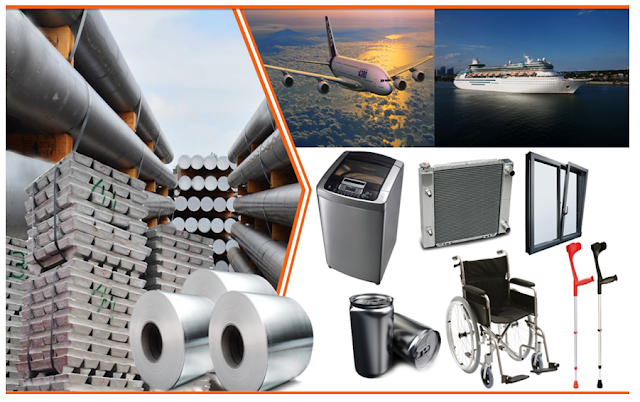GREEN ALUMINIUM IN THE SHORT TERM, A DREAM OR A REAL POSSIBILITY?
THE GOAL
It is a desire of the international community to reduce, as much as possible, greenhouse gas emissions in line with society's climate objectives as much as possible; therefore, given the high volumes of CO2 emissions from the Aluminium Industry, this important sector industry faces great challenges to adapt to this global clamour.
THE CHALLENGE
But how big is
the challenge facing the Aluminium Industry
in terms of its obligation to support the fight against climate change? According
to the International Aluminium Institute,
the sector is responsible for 1.1 billion tons of greenhouse gas emissions per
annum, and must undertake a plan to substantially reduce its carbon footprint.
This reality in turn faces the challenge that as a consequence of the electro-intensive nature of primary aluminium production, and the majority use of electricity generated from fossil fuels, 90% of this footprint is from primary aluminium production processes, while primary aluminium currently makes up around 70% of annual metal demand.
In
this regard, Tim Murray in his article Where will Green energy come from? explains that in 2022 the world production
was approximately 70M mt of which 77% was from fossil fuel power generation, an
in terms of green energy (Wind, Solar, Hydro and Nuclear) only 23% coming from
green energy.
Additionally, the International Aluminium Institute also establishes that Electricity-related emissions dominate the 75% of sectorial emissions that smelting represents; consequently, that the most effective solution to reduce greenhouse gas emissions by the Aluminium Industry is the decarbonisation of the electricity used.
THE OPTIONS
Knowing the
solution, it seems that it is easy to give an answer to the problem, since it
is enough to stop using electricity generated using fossil fuels, and use
electricity generated from renewable sources, as simple as that !!!!.
But as Tim Murray explains, in terms of Green Energy the capital cost to build such plants is much higher than a fossil
fuel plant. In addition, the time to construct green energy projects also takes
longer given the significant amount of government regulations.
Furthermore, since primary aluminium is an industry that must receive electricity 24/7/365;
therefore, the use of solar and wind energy, without the incorporation of the
still expensive storage systems, is inadequate to be able to satisfy the growth
of the demand for primary aluminium.
What
to do then?
At this
crossroads, important decisions must be made, since in order to satisfy the
growing demand for aluminium, new aluminium
smelters must be built, which during the Capex payment period require a sufficiently low electricity price
to make these projects economically viable.
Given the
above, if we add to this the Capex
for the construction of electricity generating plants from renewable sources,
the economic viability of sectors, primary aluminium and clean energy, may be
compromised.
See: VENEZUELA
AND GREEN ALUMINUM PRODUCTION (jesusimery.blogspot.com)
Dr. Jesús Imery
PhD Engineering and
Materials Science (Imperial College, London)
Email: jesus.imery@alprotes.com
Email: alprotes@alprotes.com











Comentarios
Publicar un comentario